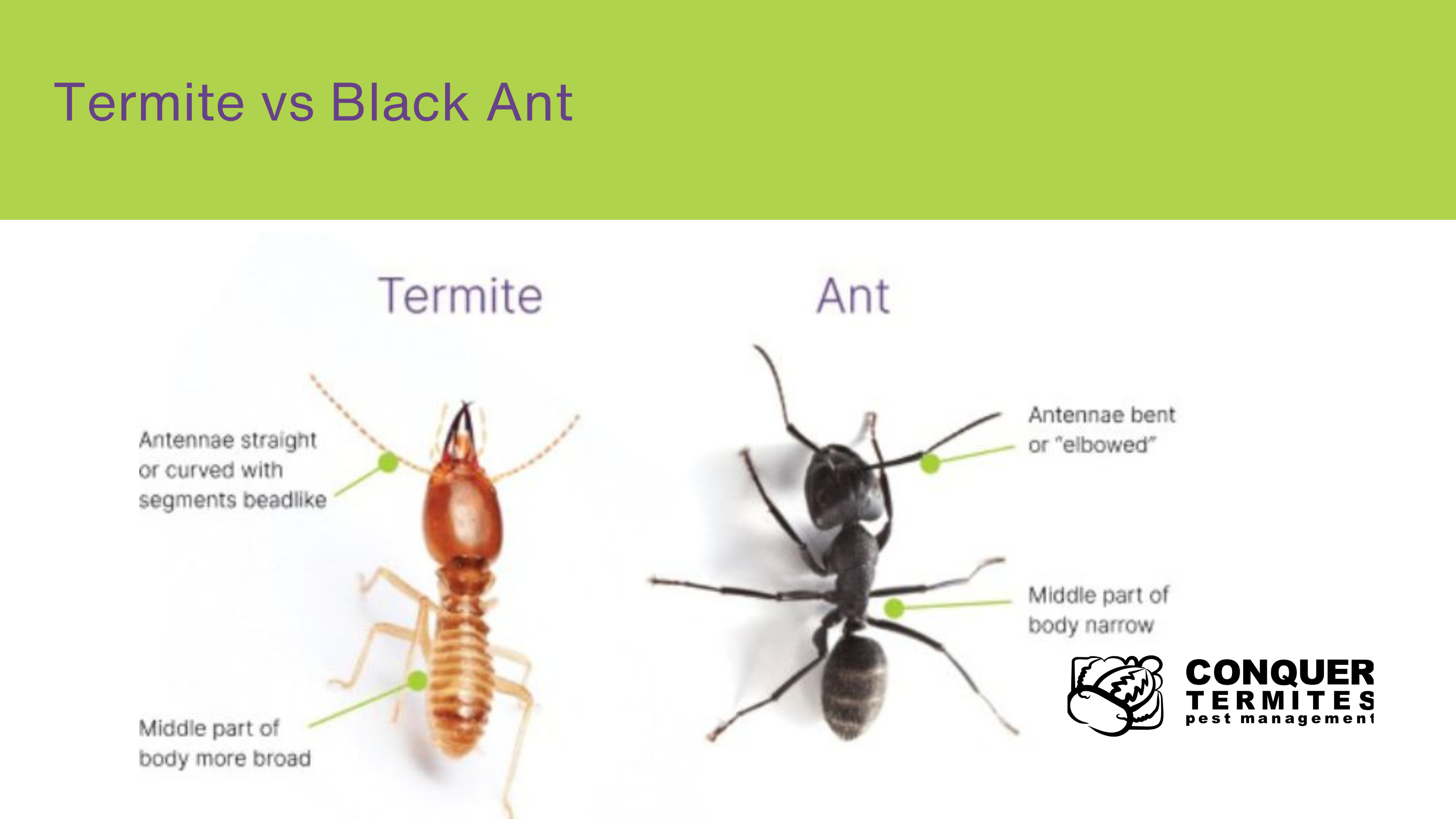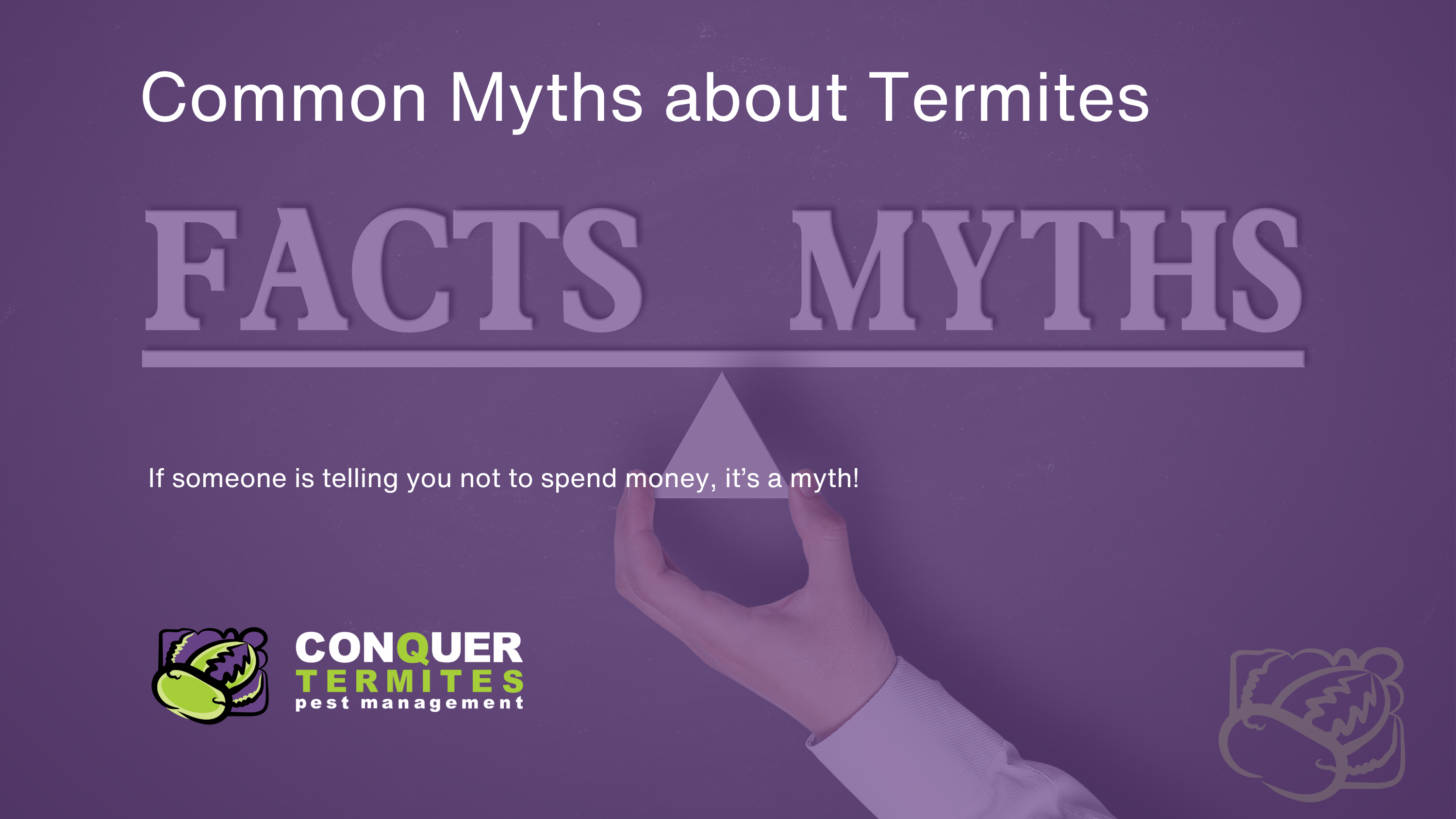Termite Myths = Not Spending Money
Your neighbour or family friend isn’t the expert!
So old Tom over the back fence might be telling you something that his dad did back on the farm last century, but now, as then, it has no relevance and is just right out dangerous and inappropriate.
Don’t get information from amateurs, get advice from termite experts.
Let us debunk termite myths:
1. “White Ants” are Actually Termites
Contrary to popular belief, termites, colloquially known as “White Ants” in Australia, aren’t ants at all. The similarity in appearance between Black Ants and Termites can lead to this confusion. Both species have six legs, antennas, and live in colonies. Yet, they differ in many ways, from body shape to behaviour.

WHAT DO TERMITE WHITE ANTS ) LOOK LIKE PAGE LINK-
2. Termites in the Garden - Should leave them alone.
Wrong! Ignoring termites in your garden can have disastrous consequences. Environments with timber, old tree stumps, and moisture act as termite magnets. Left unchecked, these critters can advance from feasting on your fences to threatening your home. Act promptly!
3. A brick house on a concrete slab is safe from termites
Think again. Most homes have wooden internal frames, making them vulnerable to termites. Concrete slabs may not offer as much protection as you think; termites can find their way through cracks, pipes, and even the mortar gap between bricks.
4. Termites Can Chew Through Concrete
A popular misconception. While termites can’t eat through concrete, they’re experts at exploiting minuscule cracks. Over time, as they travel back and forth, these cracks can widen, giving the illusion of them “eating” through.
The thing you need to be worried about the most is termites building mud leads up and over the slab edge.
5. Hardwood Homes are Immune to Termites
While it’s true that some hardwoods are naturally resistant, not all are. Homes built on the Gold Coast before the 1960s were constructed using eucalyptus timbers (gum trees). A timber that termites have been eating and nesting in for millions of years.
If your home was built after the 1970s, there is a good chance the builder used pine radiata, a soft wood, that termites can quickly consume.
6. Baiting Systems are the Ultimate Protection
Baiting systems have their merits, and we install them too. However, they’re not the definitive solution. If termites don’t discover the bait, it won’t help. A comprehensive chemical barrier treatment, like the ones we install using Termidor, is often the most effective method.
However, if the construction is complicated and makes it difficult to effectively install a chemical termite treatment, then a baiting program is a better option.
7. If My Neighbor’s Property Was Treated for Termites, Am I At Risk?
Termite colonies are vast and complex and can forage 150 meters from their nest. If the house next to yours has a reported termite infestation, then there is a good chance there is a termite colony foraging near yours'.
The main reason homes get termites is that there isn’t appropriate protection in place.
8. Termites Are like Mistiquotes - Annoying and Destructive Pests
On the contrary, termites play a vital role in our ecosystem, helping to decompose dead wood. It’s only when they enter our homes that they become a problem. Remember, we have moved into their backyard.
9. Annual Termite Control is Mandatory
Modern termiticides can last between 5 and 10 years as recommended by the manufacturer. However, annual inspections are crucial to ensure there’s no breach in the protective barrier.
10. All Termite Companies Offer the Same Service
Absolutely not. Companies vary in their chemical use, service quality, and warranties. Don’t settle for the cheapest option without researching first. Ask for testimonials and recommendations.
Knowledge is power. Equip yourself with accurate information to protect your home effectively.



